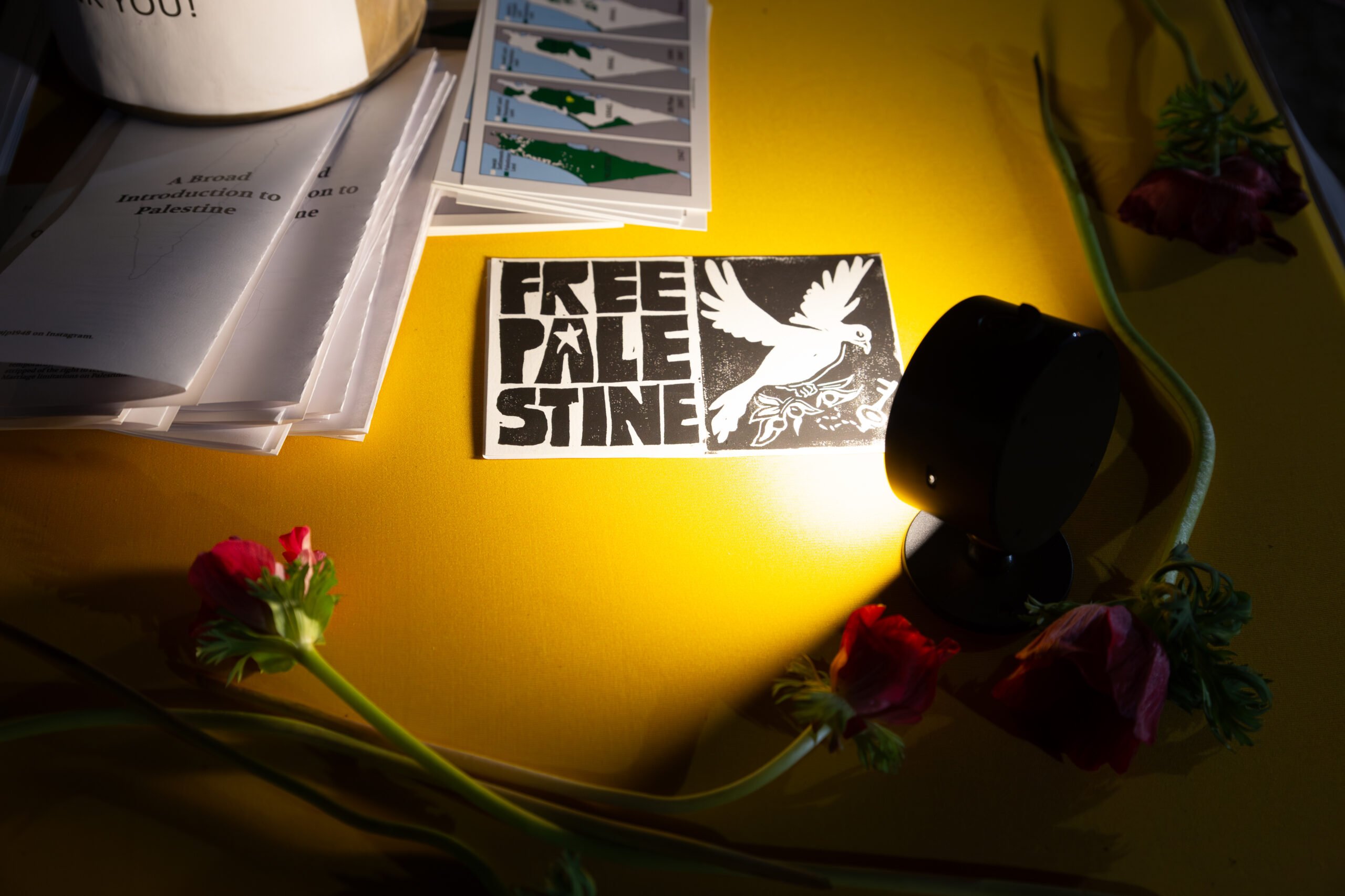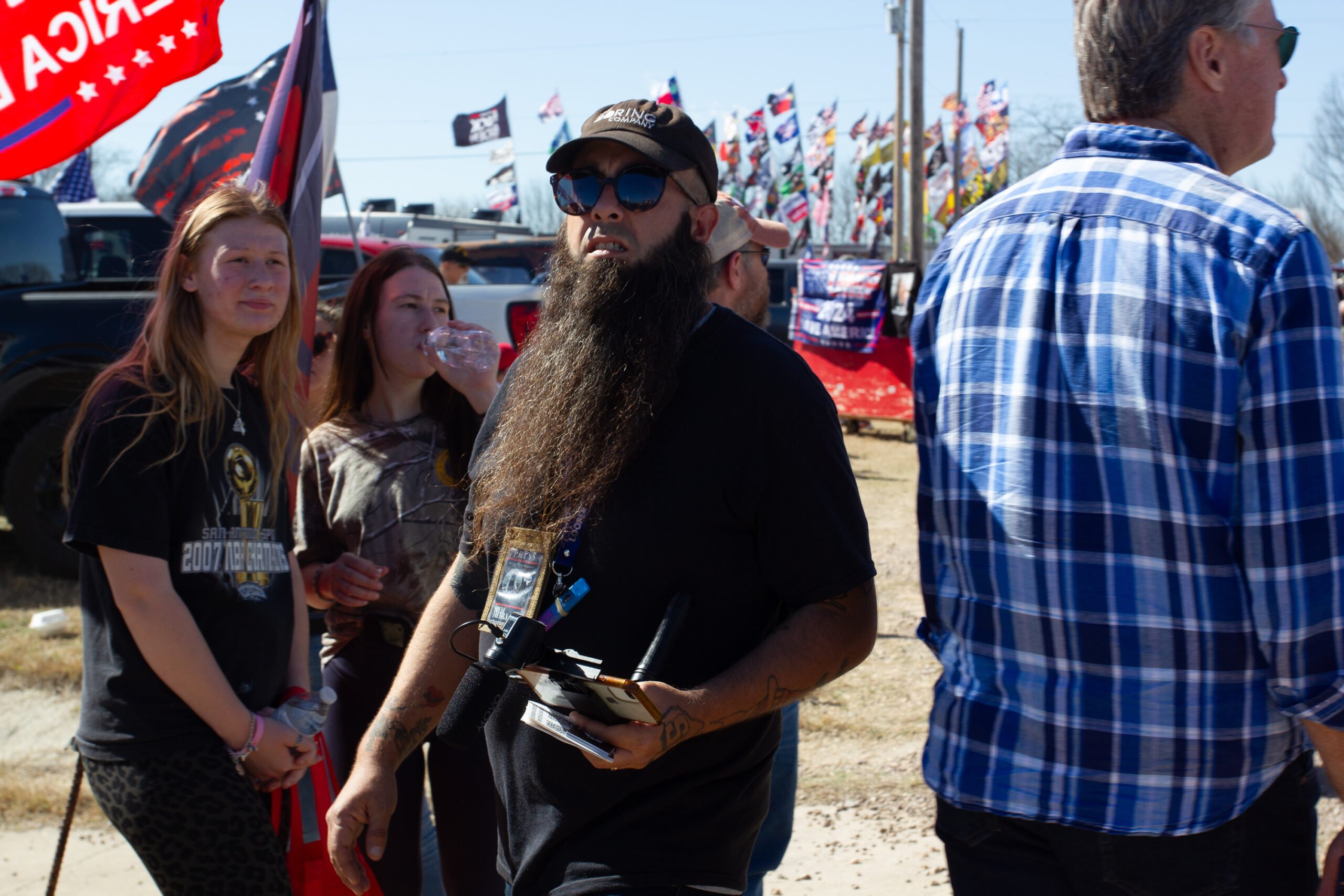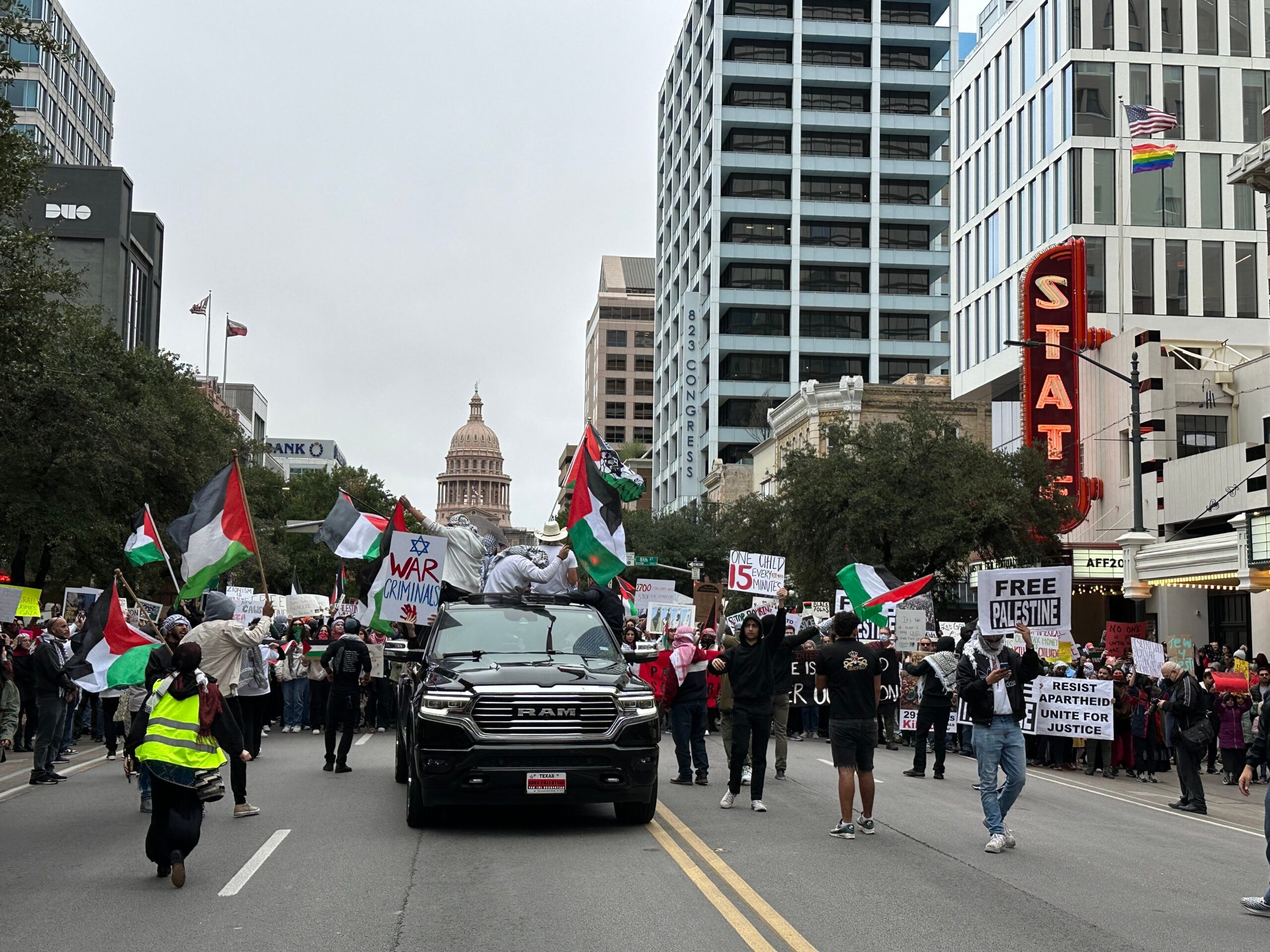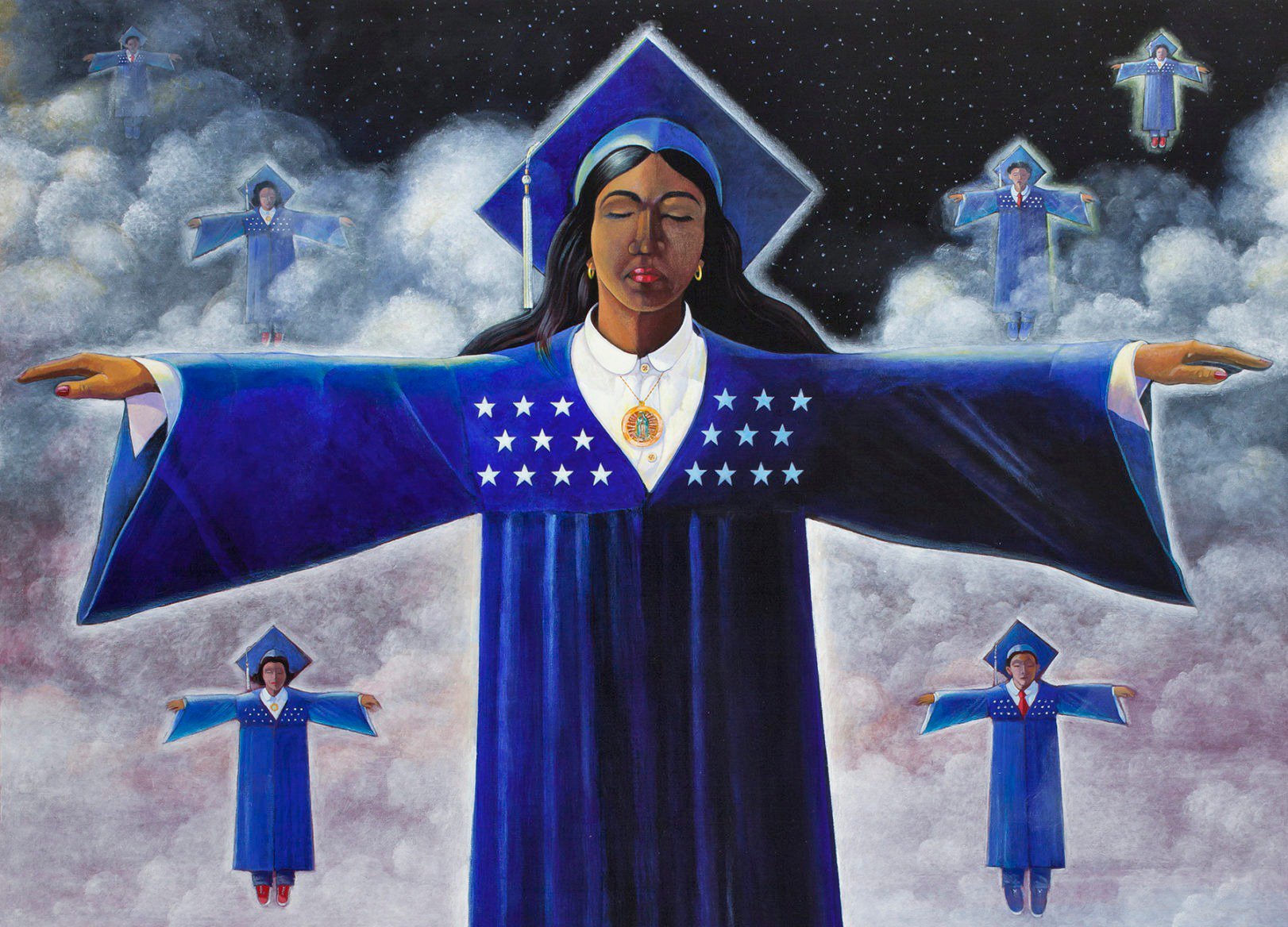
In San Antonio, ‘The Other Side of the Alamo’ Turns Whitewashed Texas History on Its Head
Open through July 20 at the Guadalupe Cultural Arts Center, the show ranges in tone from playful to serious, celebratory to mournful.
Above: The floating Mexican-American students in Jose Esquivel's "Dreamers in Space" represent the suspension of DACA recipients within the immigration system.
When a young Texan reaches the fourth grade, she shuffles onto a bus and prepares for a rite of passage: a visit to the Alamo. The trip is paired with a full year of state history coursework, to be repeated again in seventh grade. Kids learn about Texas heroes like James Bowie, Davy Crockett and William B. Travis, with his famous proclamation of “victory or death.” They try on coonskin hats in the gift shop and pose for photos in front of the chapel’s iconic white limestone facade. The Battle of the Alamo, we’re told, is more or less a simple story: The white settlers bravely held out for 13 days until they were slaughtered by Santa Anna’s vicious forces. Inspired by their comrades’ sacrifice, the Texians won independence shortly after at the Battle of San Jacinto. That’s it, right? After all, the Alamo is as central to state pride as bluebonnets and Whataburger.
Not for everyone, says Ruben C. Cordova. An art historian and photographer, he’s the curator of “The Other Side of the Alamo: Art Against the Myth,” a multimedia exhibit featuring the work of 26 Hispanic artists from San Antonio. Open through July 20 at the Guadalupe Cultural Arts Center, the show ranges in tone from playful to serious, celebratory to mournful.
Cordova argues that the Alamo myth ignores the lived experiences and systemic oppression of the more than 10 million Hispanic Texans — who, after all, represent 39 percent of the state and 52 percent of all public school students. “It erases people of color by ignoring the devastating effect that Alamo symbolism, commencing with the Texian revolt, has had on people of color,” he said.
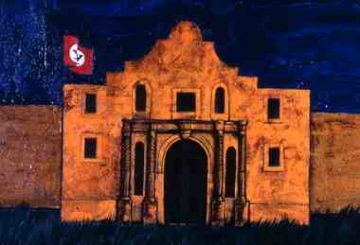
The Alamo myth has been retold in every way imaginable, from glorifying Westerns starring the likes of John Wayne and Billy Bob Thornton to downright racist, Birth of a Nation-esque films such as Martyrs of the Alamo. They’ve all ignored those whose lives have been affected by what Cordova calls “the curse of the Alamo.”
Cordova describes this curse as the oversimplified belief that the Texians “were for all that was good and the American way. The Mexicans were tyrants and murderers and whatever else they were charged with.”
This “curse” and its effect on Mexican Americans is on full display at the Cultural Arts Center, which received a $30,000 grant from the Andy Warhol Foundation for the Visual Arts to help create the show. The red painted walls of the exhibit’s four rooms hint at both the bloody history of the massacre and the blood of countless Native Americans and Mexicans, shed first by missionaries and then by the Texian Army. The 33 works that fill the walls include paintings, photos, a film, flags and sculptures.
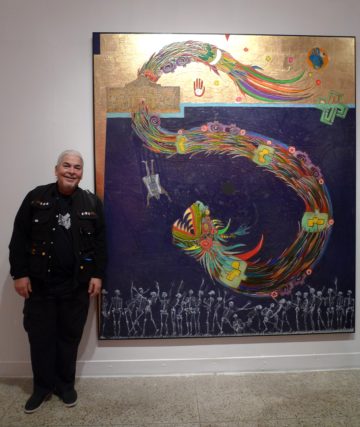
The initial planning of the exhibition began as far back as 1999, when Cordova moved to San Antonio to teach at the University of Texas at San Antonio (UTSA) and began researching Con Safo, a Chicano art collective started in South Texas during the late 1960s. Founder Felipe Reyes painted what became the first work of the current exhibition. In Reyes’ painting, “Sacred Conflict,” the United Farm Workers’ flag waves above the Alamo chapel’s limestone crest. Reyes, born in San Antonio in 1944, witnessed the rise of the influential labor union, joined the Raza Unida party and ultimately created the arts collective to fill the void he saw in Mexican-American cultural representation.
Many of the works in the exhibit were pulled from a period of protest in the ’60s and ’70s, when Con Safo members and other local artists homed in on replacing what they believe to be false representations of the Alamo. Other works were commissioned for the exhibition. Together, they paint the full picture of what the Alamo myth has done to the perception of Mexican Americans — which Cordova said would be incomplete without representing the struggles faced by the current generation, prominently on display in the last room of the exhibition.
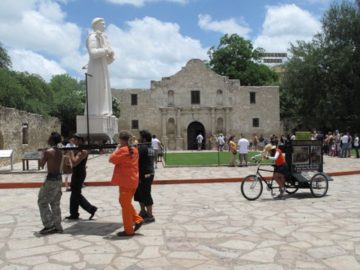
In a painting by Con Safo member Jose Esquivel, DACA recipients are suspended in the sky amid a sea of clouds, their arms outstretched like Christ the Redeemer — their state of limbo an on-the-nose representation of their experience not fully belonging in either Mexico or the United States.
“Spinning San Antonio de Valero,” a styrofoam sculpture by another Con Safo member named Rolando Briseno, depicts the figure of Saint Anthony — the patron saint of lost and stolen objects — standing atop the Alamo Mission. The sculpture can also be rotated 180 degrees, so that the mission is on top and Saint Anthony is upside down. The reversal represents the perennial struggle over who gets to tell the Alamo story.
“It’s sort of like a form of reportage,” said Reyes, referring to the collective’s attempts to rewrite the mythology of the Alamo. “If we make paintings, they will last forever.”
